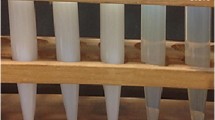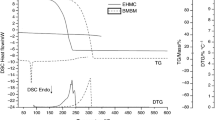Abstract
The effects of ultraviolet (UV) radiation emitted by the sun are cumulative and can result in chemical changes such as the generation of reactive oxygen species (ROS), leading to the regular use of sunscreen. As an alternative, the use of antioxidants, such as quercetin, into sunscreen can control these effects and provide additional skin photoprotection. However, quercetin presents low stability and poor permeation, alternatively, the encapsulation in nanoparticles can improve the stability and skin permeation. Thus, this study aimed to develop photoprotective formulations containing nanoencapsulated quercetin, characterize the physical-mechanical and sensorial properties, and evaluate the influence of nanocarriers on sun protection factor (SPF) and the immediate clinical effects. Sunscreen formulations with or without antioxidants in a free form or loaded in nanostructured lipid carriers (NLCs) were developed. After the stability, rheological behavior, texture profile, and in vivo SPF (sun protector factor) evaluation, sixty female participants, aged between 20 and 35 years, were enclosed to evaluate the sensorial properties and immediate clinical effects of the formulation in the skin hydration using biophysical and skin imaging techniques. The correlation of rheological behavior, texture profile, and sensory properties enabled the correct choice of formulation ingredients. In addition, the use of NLCs with quercetin significantly improved the SPF in vivo of the developed photoprotective formulation, without increasing the amount of UV filters. Finally, the association of NLCs in the photoprotective formulation showed synergistic effects in the SPF and an improvement in the skin barrier function and hydration.










Similar content being viewed by others
References
Corrêa MDP. Solar ultraviolet radiation: properties, characteristics and amounts observed in Brazil and South America. An Bras Dermatol. 2015;90(3):297–313.
Wilson BD, Moon S, Armstrong F. Comprehensive review of ultraviolet radiation and the current status on sunscreens. J Clin Aesthet Dermatol. 2012;5(9):18.
Badea G, Lăcătuşu I, Badea N, Ott C, Meghea A. Use of various vegetable oils in designing photoprotective nanostructured formulations for UV protection and antioxidant activity. Ind Crop Prod. 2015;67:18–24. https://doi.org/10.1016/j.indcrop.2014.12.049.
Emri G, Paragh G, Tósaki Á, Janka E, Kollár S, Hegedűs C, et al. Ultraviolet radiation-mediated development of cutaneous melanoma: an update. J Photochem Photobiol B Biol. 2018;185:169–75. https://doi.org/10.1016/j.jphotobiol.2018.06.005.
Vicentini FTMDC, Georgetti SR, Bentley MVLB, Fonseca MJV. Assessment of in vitro methodologies to determine topical and transdermal delivery of the flavonoid quercetin. Braz J Pharm Sci. 2009;45(2):357–64. https://doi.org/10.1590/S1984-82502009000200022.
Souza C, Campos PMM. Development and photoprotective effect of a sunscreen containing the antioxidants Spirulina and dimethylmethoxy chromanol on sun-induced skin damage. Eur J Pharm Sci. 2017;104:52–64. https://doi.org/10.1016/j.ejps.2017.03.026.
Casagrande R, Georgetti SR, Verri WA, Dorta DJ, dos Santos AC, Fonseca MJV. Protective effect of topical formulations containing quercetin against UVB-induced oxidative stress in hairless mice. J Photochem Photobiol B Biol. 2006;84:21–7. https://doi.org/10.1016/j.jphotobiol.2006.01.006.
Vicentini FT, Fonseca YM, Pitol DL, Iyomasa MM, Bentley MVL, Fonseca MJ. Evaluation of protective effect of a water-in-oil microemulsion incorporating quercetin against UVB-induced damage in hairless mice skin. J Pharm Pharm Sci. 2010;13(2):274–85. https://doi.org/10.18433/J3830G.
Hatahet T, Morille M, Hommoss A, Devoisselle JM, Müller RH, Bégu S. Quercetin topical application, from conventional dosage forms to nanodosage forms. Eur J Pharm Biopharm. 2016;108:41–53. https://doi.org/10.1016/j.ejpb.2016.08.011.
Pivetta TP, Silva LB, Kawakami CM, Araújo MM, Del Lama MPFM, Naal RM, et al. Topical formulation of quercetin encapsulated in natural lipid nanocarriers: evaluation of biological properties and phototoxic effect. J Drug Deliv Sci Technol. 2019;53:101148. https://doi.org/10.1016/j.jddst.2019.101148.
Bose S, Du Y, Takhistov P, Michniak-Kohn B. Formulation opti mization and topical delivery of quercetin from solid lipid based nanosystems. Int J Pharm. 2013;441(1–2):56–66. https://doi.org/10.1016/j.ijpharm.2012.12.013.
Shetty PK, Venuvanka V, Jagani HV, Chethan GH, Ligade VS, Musmade PB, et al. Development and evaluation of sunscreen creams containing morin-encapsulated nanoparticles for enhanced UV radiation protection and antioxidant activity. Int J Nanomedicine. 2015;10:6477–91. https://doi.org/10.2147/IJN.S90964.
Joshi H, Hegde AR, Shetty PK, Gollavilli H, Managuli RS, Kalthur G, et al. Sunscreen creams containing naringenin nanoparticles: formulation development and in vitro and in vivo evaluations. Photodermatol Photoimmunol Photomed. 2018;34(1):69–81. https://doi.org/10.1111/phpp.12335.
Müller RH, Radtke M, Wissing SA. Nanostructured lipid matrices for improved microencapsulation of drugs. Int J Pharm. 2002;242(1–2):121–8. https://doi.org/10.1016/S0378-5173(02)00180-1.
Shirata MMF, Campos PMBGM. Importância do perfil de textura e sensorial no desenvolvimento de formulações cosméticas. Surg Cosmet Dermatol. 2016;8(3):223–30. https://doi.org/10.5935/scd1984-8773.201683861.
Lee CH, Moturi V, Lee Y. Thixotropic property in pharmaceutical formulations. J Control Release. 2009;136(2):88–98. https://doi.org/10.1016/j.jconrel.2009.02.013.
Gaspar LR, Maia Campos PMBG. Rheological behavior and the SPF of sunscreens. Int J Pharm. 2003;250(1):35–44. https://doi.org/10.1016/S0378-5173(02)00462-3.
Pivetta TP, Simões S, Araújo MM, Carvalho T, Arruda C, Marcato PD. Development of nanoparticles from natural lipids for topical delivery of thymol: investigation of its anti-inflammatory properties. Colloids Surf B: Biointerfaces. 2018;164:281–90. https://doi.org/10.1016/j.colsurfb.2018.01.053.
Brasil. Resolução N°899: Validação De Métodos Analíticos E Bioanalíticos Métodos Analíticos, Agencia Nacional de Vigilância Sanitária. 2003.
Guideline, ICH Harmonised Tripartite. Validation of analytical procedures: text and methodology Q2 (R1). In: International conference on harmonization, Geneva, Switzerland. 2005. p. 11–12.
Gianeti MD. Estabilidade e eficácia clínica de formulações dermocosméticas contendo filtro solares, vitaminas lipossolúveis e extrato de Ginkgo biloba e algas marinhas vermelhas. Faculdade de Ciências Farmacêuticas de Ribeirão Preto: Tese de Doutorado; 2013.
Brasil. (2012). Guia para realização de estudos de estabilidade. 2°edição, Agência Nacional de Vigilância Sanitária – ANVISA. p 74.
Calixto LS, Maia Campos PMBG. Physical–mechanical characterization of cosmetic formulations and correlation between instrumental measurements and sensorial properties. Int J Cosmet Sci. 2017;39(5):527–34. https://doi.org/10.1111/ics.12406.
Vitorino C, Almeida J, Gonçalves LM, Almeida AJ, Sousa JJ, Pais AACC. Co-encapsulating nanostructured lipid carriers for transdermal application: from experimental design to the molecular detail. J Control Release. 2013;167(3):301–14. https://doi.org/10.1016/j.jconrel.2013.02.011.
Calixto LS, Infante VHP, Campos PMM. Design and characterization of topical formulations: correlations between instrumental and sensorial measurements. AAPS PharmSciTech. 2018;19(4):1512–9. https://doi.org/10.1208/s12249-018-0960-0.
Samakradhamrongthai R, Thakeow P, Kopermsub P, Utama-Ang N. Application of multi-core encapsulated Michelia alba DC flavor powder in Thai steamed dessert (Nam Dok Mai). Chiang Mai J Sci. 2017;44(2):557–72.
Paseto TR, Wagemaker TA, Campos PMM. Immediate and long-term effects of a cosmetic formulation with Cichorium intybus root extract. 2017;2(14):220–232. https://doi.org/10.19277/bbr.14.2.164.
Fossa Shirata MM, Campos PM. Influence of UV filters on the texture profile and efficacy of a cosmetic formulation. Int J Cosmet Sci. 2017;39(6):622–8. https://doi.org/10.1111/ics.12424.
COLIPA. In vitro method for the determination of the UVA protection factor and critical wavelength values of sunscreen products. CORRÊA, M. P., 2015. Solar ultraviolet radiation: properties, characteristics and amounts observed in Brazil and South America. An Bras Dermatol. 2011;90(3):297–313.
Marcato PD, Caverzan J, Rossi-Bergmann B, Pinto EF, Machado D, Silva RA, et al. Nanostructured polymer and lipid carriers for sunscreen. Biological effects and skin permeation. J Nanosci Nanotechnol. 2011;11(3):1880–6. https://doi.org/10.1166/jnn.2011.3135.
Osterwalder U, Sohn M, Herzog B. Global state of sunscreens. Photodermatol Photoimmunol Photomed. 2014;30(2–3):62–80.
Kamel R, Mostafa DM. Rutin nanostructured lipid cosmeceutical preparation with sun protective potential. J Photochem Photobiol B Biol. 2015;153:59–66. https://doi.org/10.1016/j.jphotobiol.2015.09.002.
Marto J, Gouveia LF, Gonçalves L, Chiari-Andréo BG, Isaac V, Pinto P, et al. Design of novel starch-based Pickering emulsions as platforms for skin photoprotection. J Photochem Photobiol B Biol. 2016;162:56–64. https://doi.org/10.1016/j.jphotobiol.2016.06.026.
Tai A, Bianchini R, Jachowicz J. Texture analysis of cosmetic/pharmaceutical raw materials and formulations. Int J Cosmet Sci. 2014;36(4):291–304. https://doi.org/10.1111/ics.12125.
Tichota DM, Silva AC, Lobo JMS, Amaral MH. Design, characterization, and clinical evaluation of argan oil nanostructured lipid carriers to improve skin hydration. Int J Nanomedicine. 2014;9:3855. https://doi.org/10.2147/IJN.S64008.
Sengupta S, Banerjee S, Sinha B, Mukherjee B. Improved skin penetration using in situ nanoparticulate diclofenac diethylamine in hydrogel systems: in vitro and in vivo studies. AAPS PharmSciTech. 2016;17(2):307–17. https://doi.org/10.1208/s12249-015-0347-4.
Müller RH, Mäder K, Gohla S. Solid lipid nanoparticles (SLN) for controlled drug delivery—a review of the state of the art. Eur J Pharm Biopharm. 2000;50(1):161–77. https://doi.org/10.1016/S0939-6411(00)00087-4.
Lacatusu I, Badea N, Murariu A, Bojin D, Meghea A. Effect of UV sunscreens loaded in solid lipid nanoparticles: a combinated SPF assay and photostability. Mol Cryst Liq Cryst. 2010;523(1):247–819. https://doi.org/10.1080/15421401003719928.
Pardeike J, Hommoss A, Müller RH. Lipid nanoparticles (SLN, NLC) in cosmetic and pharmaceutical dermal products. Int J Pharm. 2009;366(1–2):170–84. https://doi.org/10.1016/j.ijpharm.2008.10.003.
Garcês A, Amaral MH, Lobo JS, Silva AC. Formulations based on solid lipid nanoparticles (SLN) and nanostructured lipid carriers (NLC) for cutaneous use: a review. Eur J Pharm Sci. 2018;112:159–67. https://doi.org/10.1016/j.ejps.2017.11.023.
Loo CH, Ismail R, Basri M, Lau HLN, Tejo BA, Hassan HA, et al. Nanostructured lipid carriers (NLC) for efficient delivery of palm phytonutrients. J Oil Palm Res. 2014;26(3):232–9.
Purohit DK. Nano-lipid carriers for topical application: current scenario. Asian Journal of Pharmaceutics (AJP): Free full text articles from Asian J Pharm. 2016;10(1). https://doi.org/10.22377/ajp.v10i1.544.
Wissing SA, Müller RH. A novel sunscreen system based on tocopherol acetate incorporated into solid lipid nanoparticles. Int J Cosmet Sci. 2001;23(4):233–43.
Czajkowska-Kośnik A, Szekalska M, Winnicka K. Nanostructured lipid carriers: a potential use for skin drug delivery systems. Pharmacol Rep. 2019;71(1):156–66.
Souto EB, Wissing SA, Barbosa CM, Müller RH. Evaluation of the physical stability of SLN and NLC before and after incorporation into hydrogel formulations. Eur J Pharm Biopharm. 2004;58(1):83–90. https://doi.org/10.1016/j.ejpb.2004.02.015.
Funding
This study received funding from Coordenação de Aperfeiçoamento de Pessoal de Nível Superior -Brasil (CAPES) (Finance Code 001), FAPESP (Fundação do Amparo à Pesquisa do Estado de São Paulo by INCT-NANOFARMA grants 2014/50928-2 (FAPESP) and 465687/ 2014-8 (CNPq) and Grupo Investiga - Brazil for SPF determination.
Author information
Authors and Affiliations
Corresponding author
Additional information
Publisher’s Note
Springer Nature remains neutral with regard to jurisdictional claims in published maps and institutional affiliations.
Rights and permissions
About this article
Cite this article
Felippim, E.C., Marcato, P.D. & Maia Campos, P.M.B.G. Development of Photoprotective Formulations Containing Nanostructured Lipid Carriers: Sun Protection Factor, Physical-Mechanical and Sensorial Properties. AAPS PharmSciTech 21, 311 (2020). https://doi.org/10.1208/s12249-020-01858-y
Received:
Accepted:
Published:
DOI: https://doi.org/10.1208/s12249-020-01858-y




